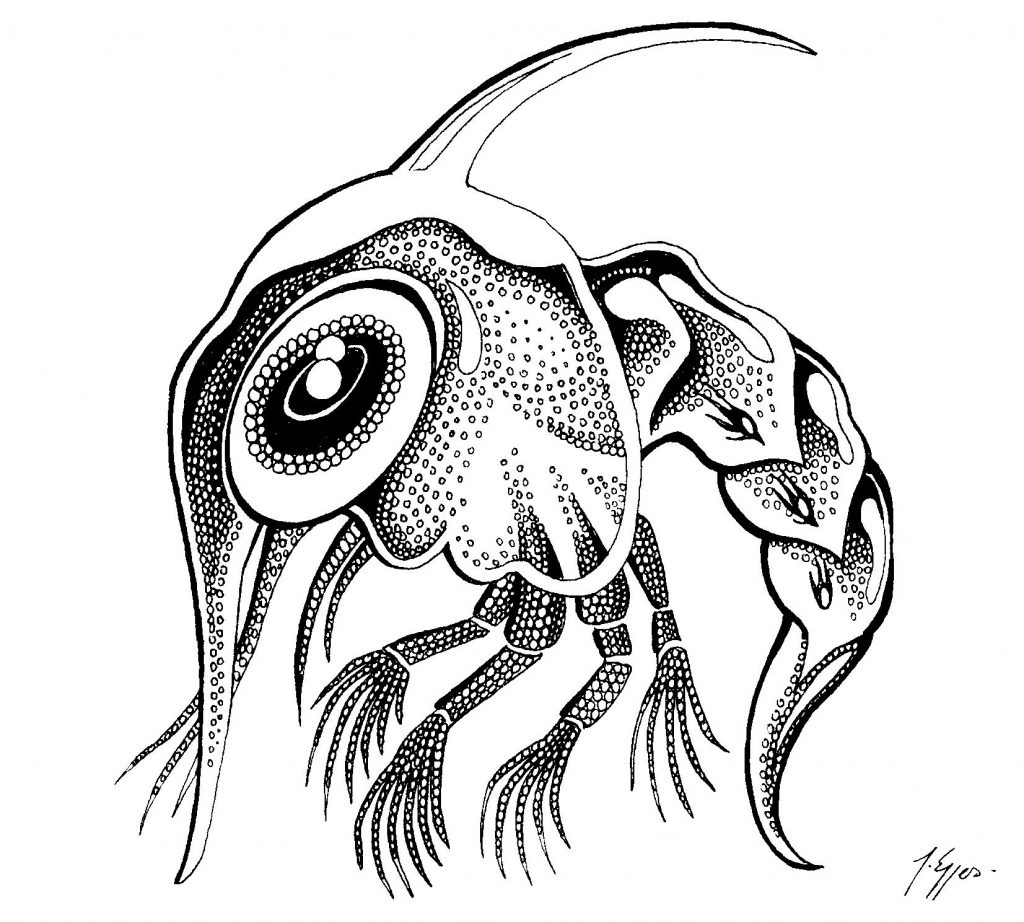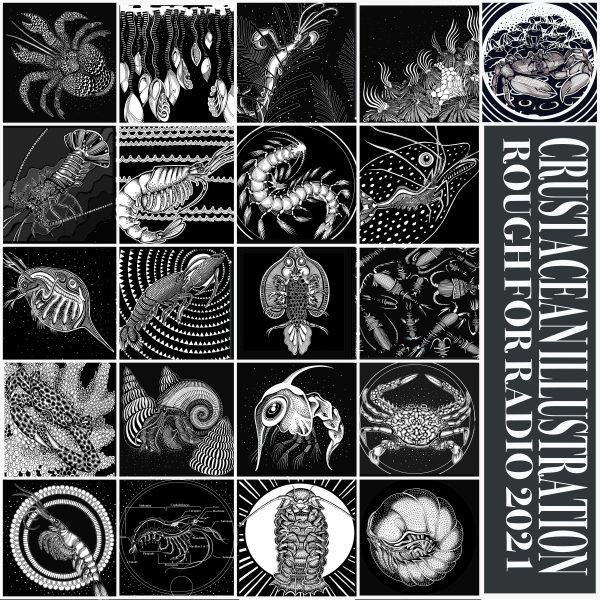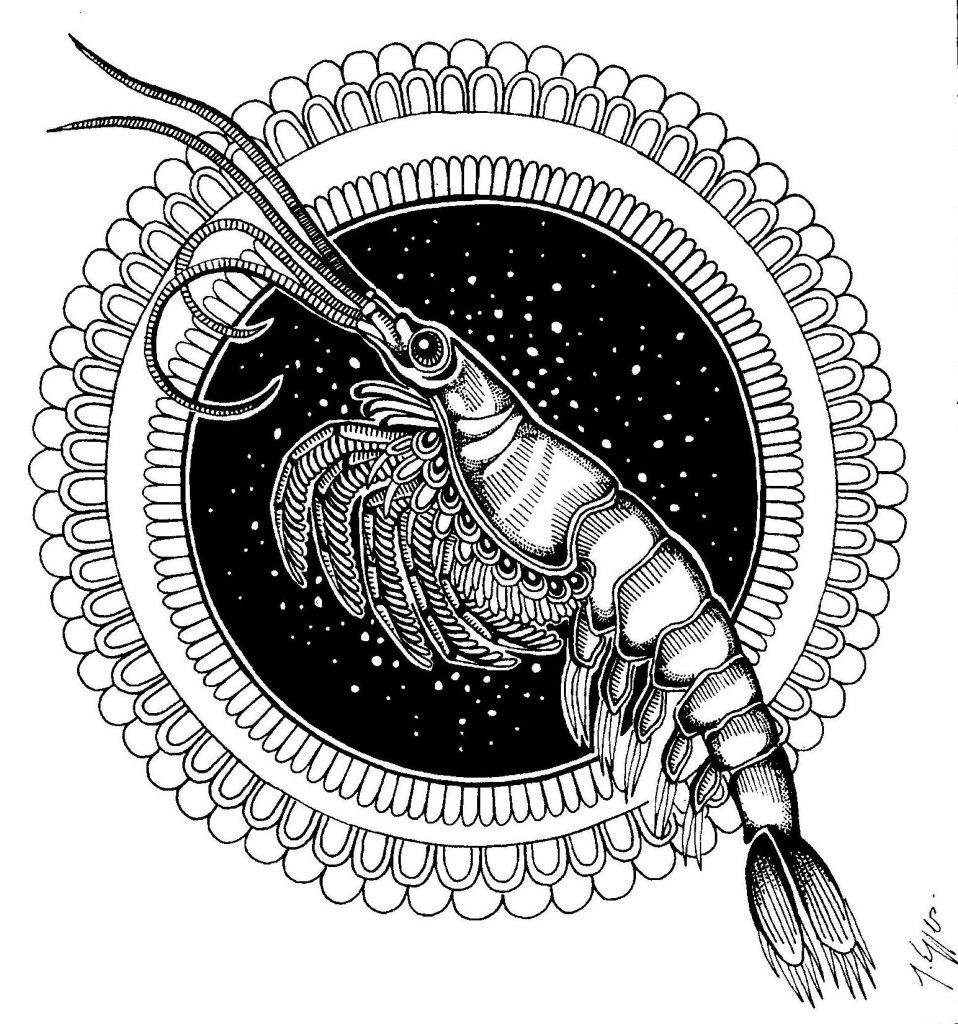
Antarctic krill (Euphausia superba)
The Antarctic krill is one of the keystone species of the Antarctic ecosystem, and one of the most abundant crustaceans, and even animals, on earth. It performs a function in linking the primary producers of the oceanic foodwebs, phytoplankton, including the tiny diatoms, to larger creatures, including fish, seabirds, and whales. The fact that even though they generally grow to a size of 6 cm, but largely consume organisms that can be only 20 μm large is highly unusual, and is achieved through their thoraic appendages that have small hairs and can thus form a “filtering net”. Another special survival mechanism that has allowed them to adapt to the harsh and food scarce environment of the Antarctic: while crustaceans molt their exoskeleton to grow, krill are often observed to molt to significantly reduce their size, thus allowing them to be a lot more economic and adaptive in their food intake.
While the Antarctic krill is not classed as endangered there are indications that the stock has dropped by around 80 % since the 1970’s, and given this creatures incredible importance in the web of the cold southern oceans, they are worth paying attention to. The krill fishery that boomed in the 80s and 90s to sell krill for direct human consumption or fish bait, animal feed or cosmetic products. Then there is ocean acidification that affect both the adult krill’s capacity to form and renew their carbonate containing exoskeleton, and lastly, global warming has driven a decrease in the Antarctics “pack ice” which is a crucial structure, particularly in the early stages of a krill’s life for protection from predators and feeding opportunities.
Apart from their ecosystem function they are thought to be one of the most important organisms in the biogeochemical carbon cycle as their diurnal vertical migrations of 100 m and their position in the food web means that they are critical in taking carbon in the form of phytoplankton from the surface to the depths of the oceans.
Copepods
These tiny crustaceans, or “insects of the sea”, typically range between 1 and 2 mm size and are omnipresent in the watercolumn of the ocean and of freshwater bodies. They are thought to be the most abundant group of multicellular animals on the planet. Characterised by their antennae of varying lengths and rounded and elongated bodies, many people might recognise them asfrom their portrayal as Sheldon J.Plankton in the Spongebob franchise, as they invade even the biomes of pop culture.
Given their size, they are a main consumer of phytoplankton, and thus are responsible for “sinking” a huge amount of carbon fryearly. As the phytoplankton takes up carbon directly as part of their photosynthesis, the copepods consume the phytoplankton at the surface of the ocean, generally over summer, and then take this carbon with them as they migrate into deeper waters over winter. It is thought that through this process, copepods transport 1 to 3 million tons of carbon into the deep ocean every year, from where it is unlikely to emerge for many hundreds of years. This is an area of the carbon cycle that is currently being studied as the effect of these copepod migrations on the buffering capacity of the ocean are still not fully understood.
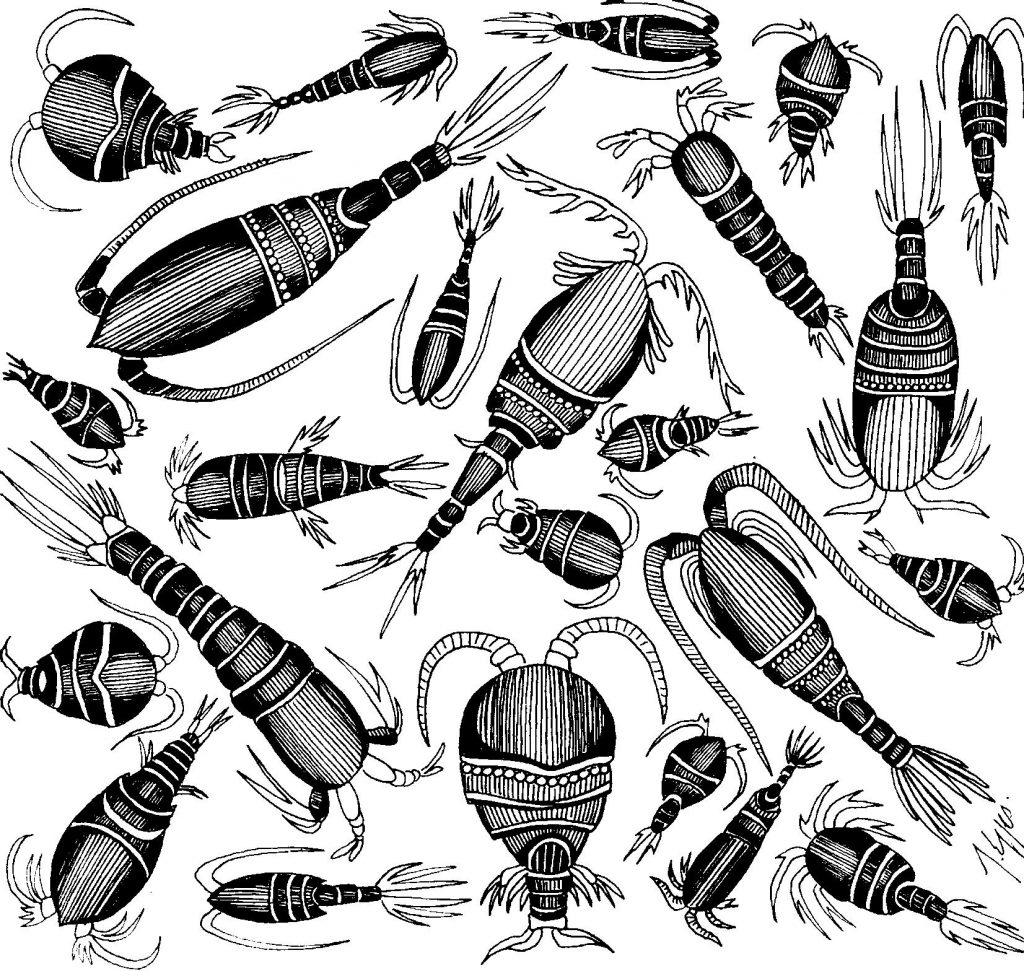
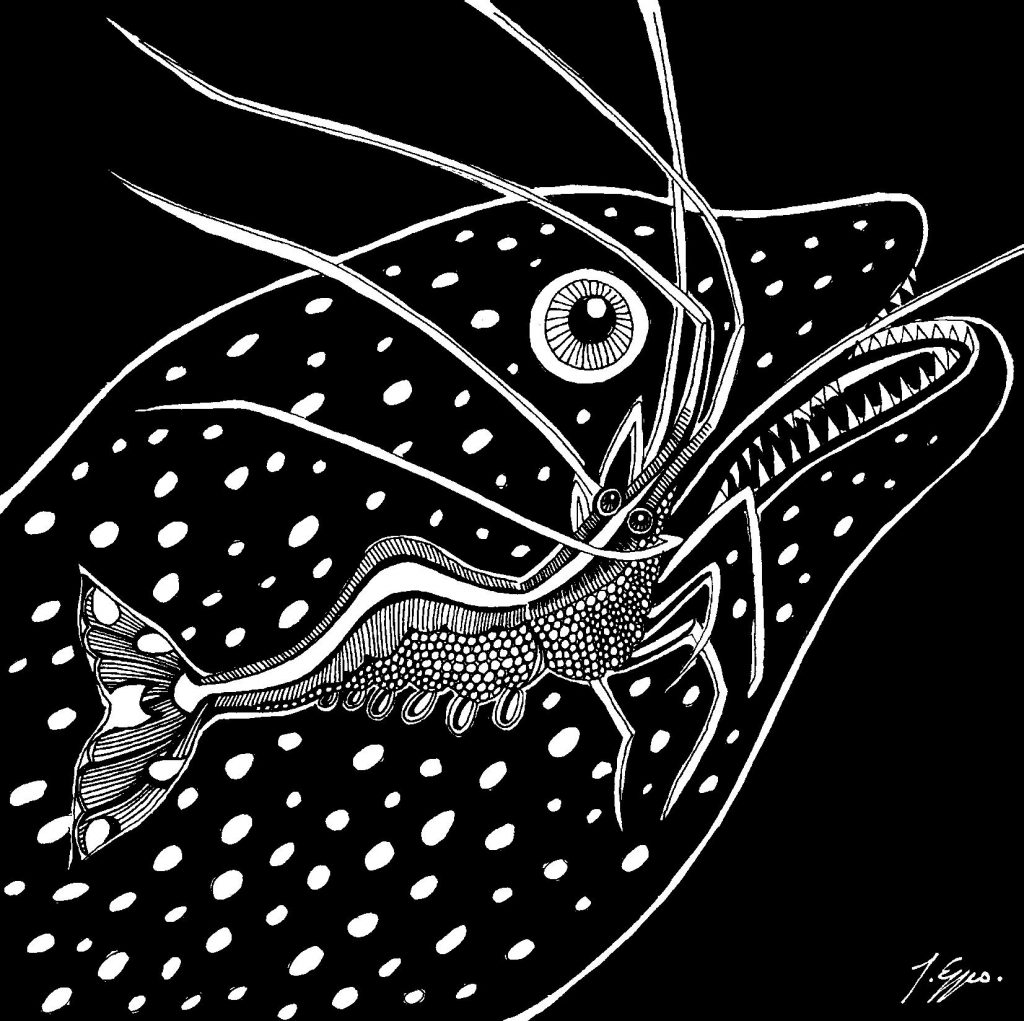
Cleaner Shrimps: Lysmata ambionensis
These exquisite little critters are the beauticians and dentists of the reef. Usually they have a designated “corner” on the reef where they advertise their station with little dances to signify to by-swimmers that they are open for business.
This is a win-win situation – even though these shrimps are fully capable of hunting small organisms for consumption, they very rarely have to since their service is so sought after, and the reward (whatever gunk they can remove from their client’s mouths, teeth or skin) is most often more than enough to satiate their appetite. Sometimes their regulars, such as moray eels, will not only provide food to their diligent cleaners, but also board, putting them up in their caves.
Shrimp from the genus Lysmata are further known for their protandric hermaphrodism: they go through a male stage as young matured shrimps but then become fully fledged hermaphrodites as they reach larger sizes, something not all that common among decapds.
Pistol Shrimps: Family Alpheidae
Shrimps from the Family Alpheidae are known as “Pistol shrimps” or “Snapping Shrimps”. By closing their specialised claw, they create the world’s most dangerous bubbles, displacing water at around 30 m per second, and creating a “cavitation bubble” which can produce sounds of up to 210 decibels (louder than their namesake’s typical 150 decibels). If not used for stunning prey, they can alternatively use this mechanism to “dig”, blow-by-blow, into solid basalt rock to create burrows.
Different species have different social systems: while many pistol shrimps have been observed to form loyal monogamous pairs, large colonies of these critters have also been found to occupy sponges. These colonies are organised into a breeding “King and Queen” pair and a large number of non-breeding constituents. While ressembling the social structure of many insect colonies, this set-up is rather rare in the marine world and is being researched. An interesting side effect of these colonies, the concentration of animals with mighty acoustic weapons is that their combined cacophony has interefered with sonar technology to detect submarines in WWI to the effect that the US for example was able to effectively “hide” its submarines among the snapping critters and avoid detection.
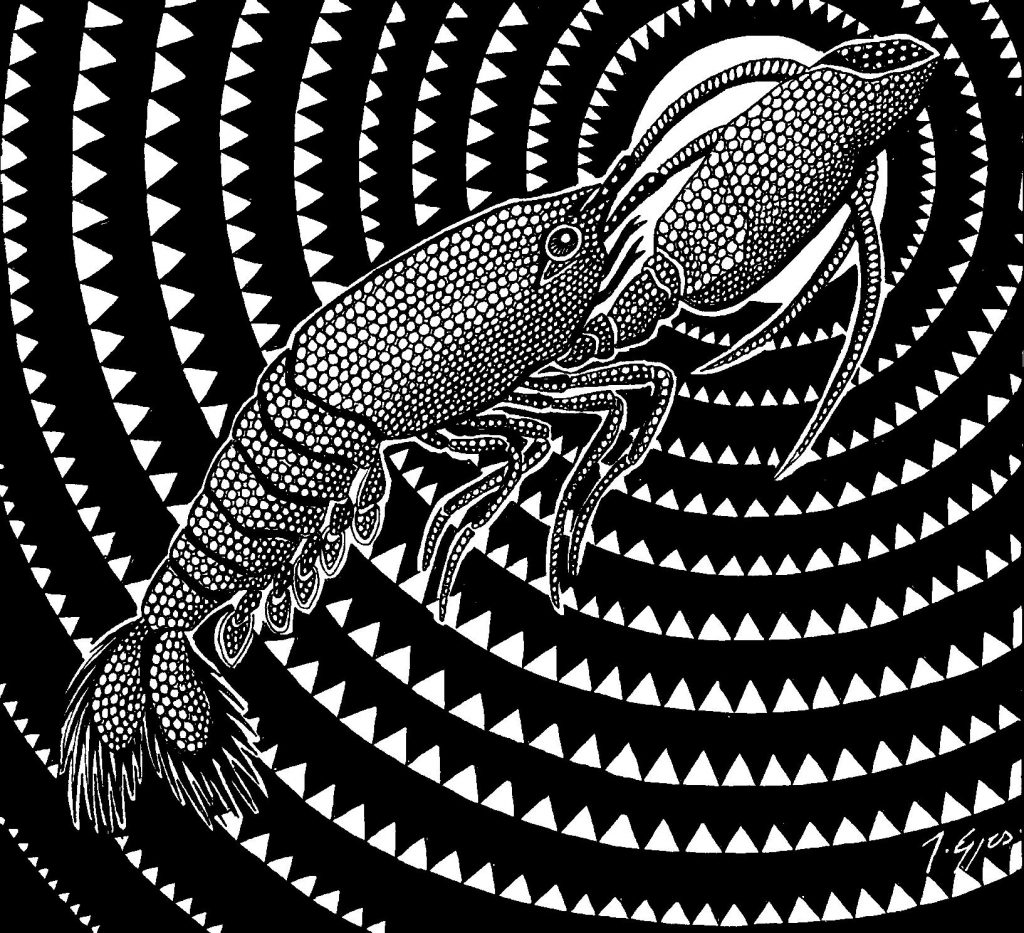
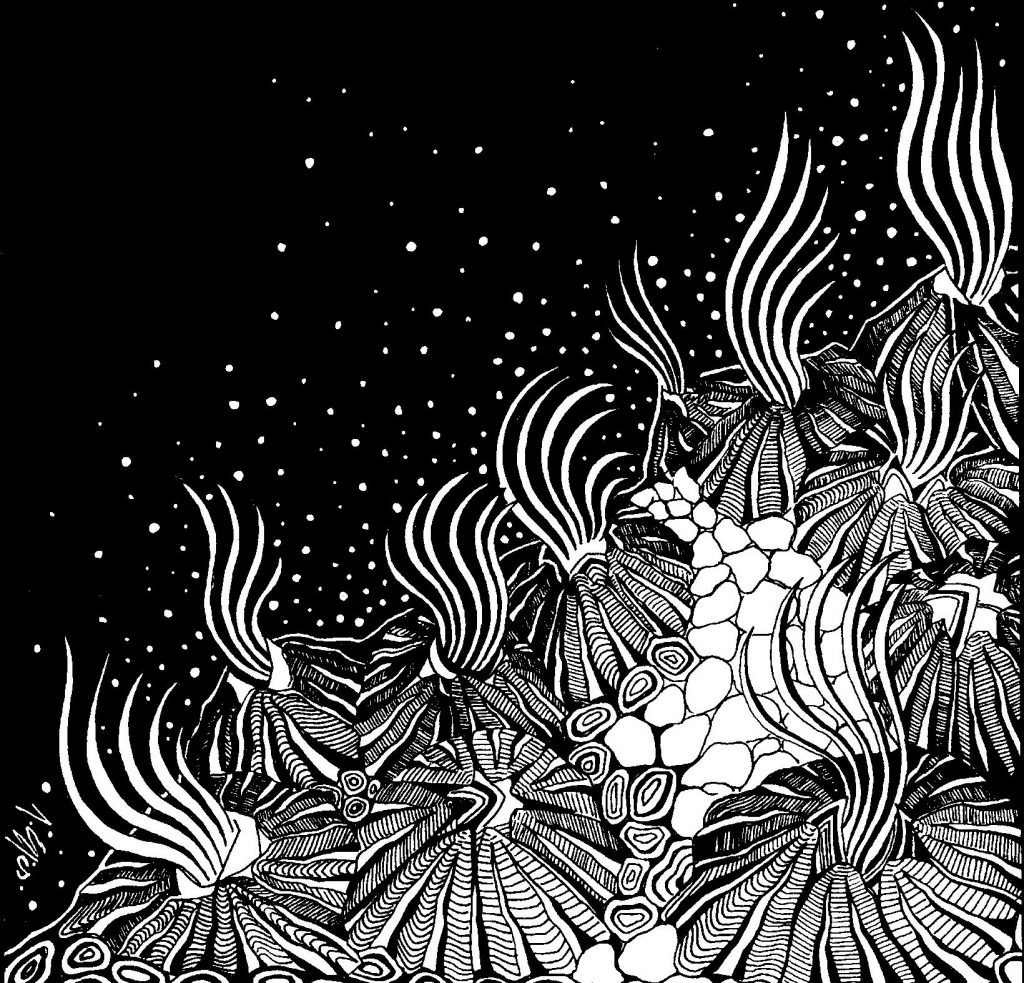
Barnacles:
Barnacles are international and ubiquitous in the world’s intertidal zones, so much so that a specific waterline is called “the barnacle zone” as the highest part of the intertidal area. They are well adapted to this lifestyle – filter feeding with their long and wavy appendages when inundated by water and closing their home water tight when exposed to the air to prevent dessication and predation from land and air animals. They are a thorn in the eye of the maritime industry, as they can and will settle on hulls, increasing their hydrodynamic drag and costing the industry around USD 6 billion annually in excessive fuel costs alone.
Barnacles are confusing. Looking at them superficially, they appear much closer to the molluscs (like whelks or limpets with whom they share a large part of their habitat), than to the crustaceans. In fact until “recently” they were classified with the other sessile and shelled organisms of the phylum mollusca, even duping the OG of taxonomy, Carl Linnaeus himself. It was not until it was found that their early life stages corresponds to the development of other crustaceans that they were reclassified.
Darwin had a love- hate relationship with these animals, labelling them “ill-formed little monsters”. Before the publication of the “Origin” he spent 8 years slaving away in trying to decipher the lineages and organize the barnacles that he had collected on his voyages. Having started with one species, he became enveloped and found himself reorganising the entire infraclass Cirripedia (both living AND fossilised). Despite his growing annoyance (“I hate a barnacle as no man ever did before,” Darwin vented, “not even a Sailor in a slow-moving ship.”), the taxonomic work conducted on these cryptic animals was highly instrumental in the final formulation of
Portunus armatus
The “Flower crab” or “Blue swimmer crab” is a common commercially fished species around south east Asia and Oceania. The Portunidae Family of crabs is characterised by the flattened, paddle-like modification of the fifth pair of legs, which means that these crabs are excellent swimmers and ferocious predators.
It is a typical estuarine species, living in the intertidal region that is characterised by the change of salt content and temperature of the water as well as periodic desiccation. As a result of the large variation of environmental conditions that they are exposed to, they spend a large part of their day (particularly in winter) buried in the soft sediment, a feature that appears to have given them an increased tolerance of environments high in nitrate and ammonia, as these are excreted but cannot be flushed away while the crab is buried.
As a result of this tolerance (which can be a limiting facture for farming), the high demand for these crabs for consumption, particularly in the Persian Gulf, and the relative ease with which the larvaes can be reared makes this a promising species with a lot of potential for big-scale a
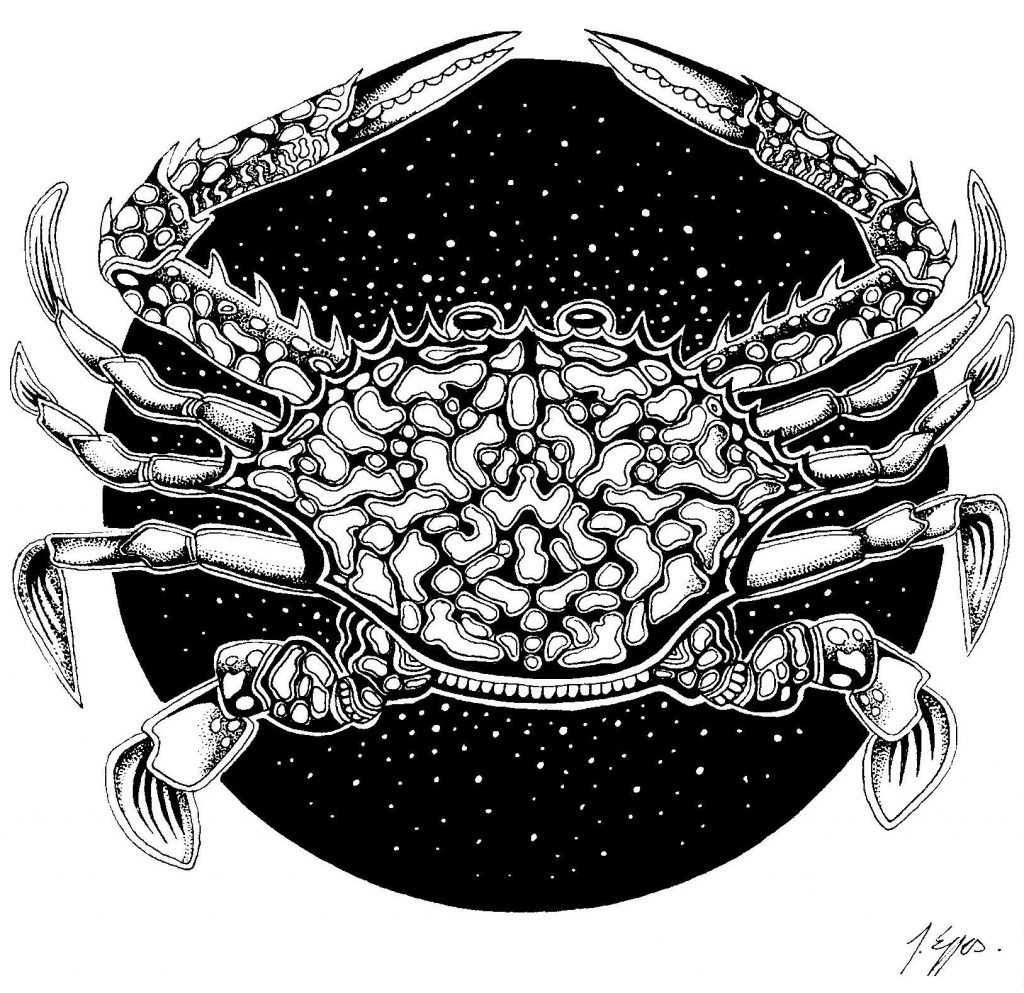
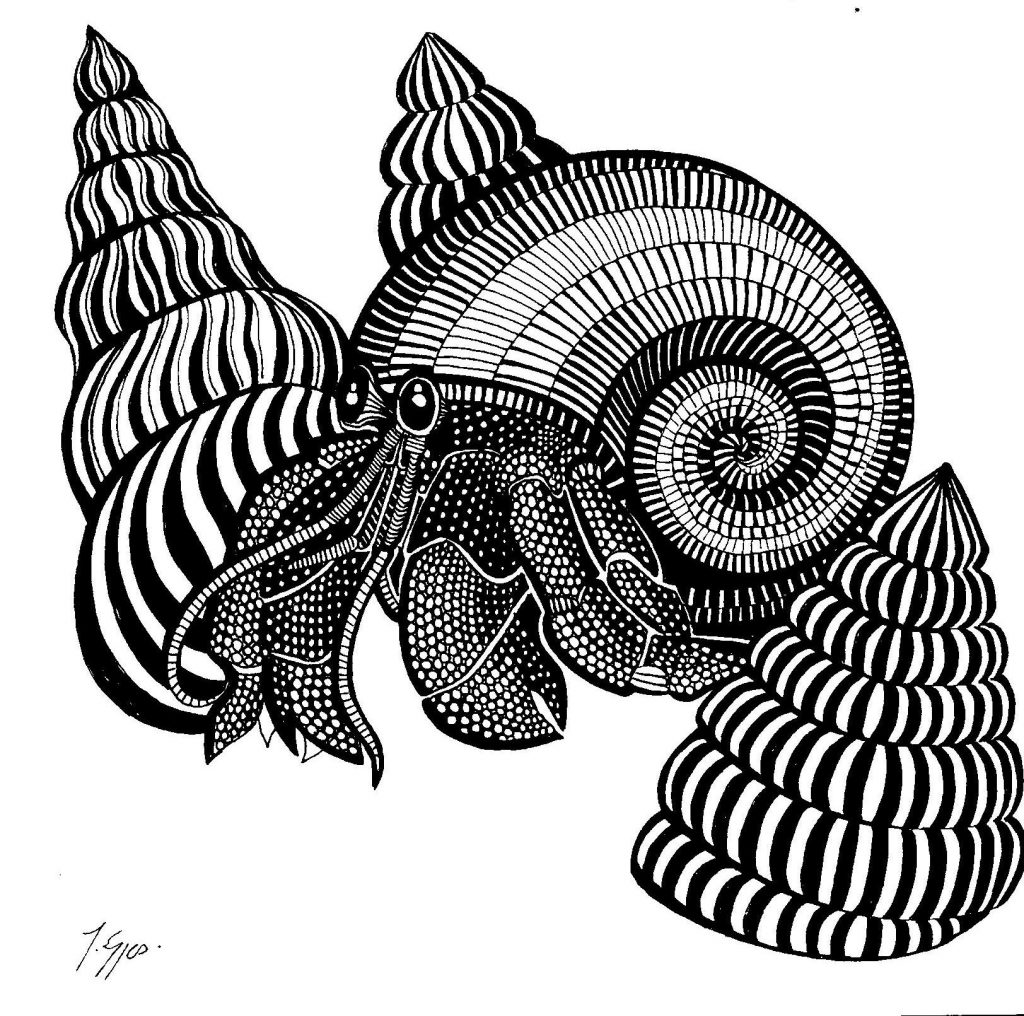
Hermit crabs:
Hermit crabs are decapods belonging to the family Paguroidea. They are fascinating creatures, having evolved to the necessity to “rent” shells of molluscs, at the cost of the soft squishy part of their body made to fit the shells being extremely vulnerable when homeless for any amount of time. The story of hermit crabs goes back to fossils from the early Jurassic, with evidence that large crabs occupied ammonite shells once upon a time (Ammonites being, now extinct, swimming molluscs similar to the Nautilus).
The need to find and squat a shell, abandoned by a seasnail, drives a lot of competition. Fierce fights occur when the number of available shells becomes limited, either due to a change in the abundance of snails or as a result of predators that are more inclined to break the shell rather than slurp the snail out of it and leave it intact. Gangs of shell-less hermit crabs have been observed to raid the muddy plains of their habitat in search of a hermit crab with a fitting shell to pillage and fight for among the group of comrades.
There is another complication to the life of a hermit crab – like other crustaceans they keep on growing, and while other crustaceans solve this problem through “moulting” to grow their armour back in a larger size, hermit crabs cant biologically enlarge their houses and have to keep on looking for larger property. One consequence of this is the occurrence of “hermit crab queues”. If one stumbles across an available shell that is just a bit too large, the hermit crab will settle down next to it and wait for other suitors. As others join the party, each sizes up the shell, and if too large, will join the queue of waiting crabs, arranged in meticulous order according to size. Once the crab arrives whom the shoe fits and it discards its previous shell, a chain reaction occurs where each crab quickly moves into the shell of the next largest suitor giving each a upgrade in quite a harmonious fashion.
Cladocera: water fleas.
Even though “fleas” actually belong to the insects, these water fleas are crustaceans. They are characterized by their thorax and abdomen not being differentiated, and the translucent body plates covering them in a way that is hinged at the back, in a taco-like fashion.
A large number of cladocerans inhabit freshwater and inland water bodies, although a number of marine species are known. They are cosmopolitan in that they have been found in incredibly diverse moisture holding habitats – from the Antarctic ice sheets and underground caves to the moisture in the lichen growing on Peru’s cloud forests. They exhibit similar reproductive strategies as some aphids and rotifers in that a majority of species reproduce via cyclical parthenogenesis (asexual cloning), interspersed by some sexual reproduction. This system, estimated to go back as far as the Permian period, is thought to benefit the population growth under diverse environmental conditions – when conditions are favourable asexual reproduction allows a quick and simple increase in numbers, while sexual reproduction and gene diversification increases the groups resilience to conditions that are challenging and rapidly changing.
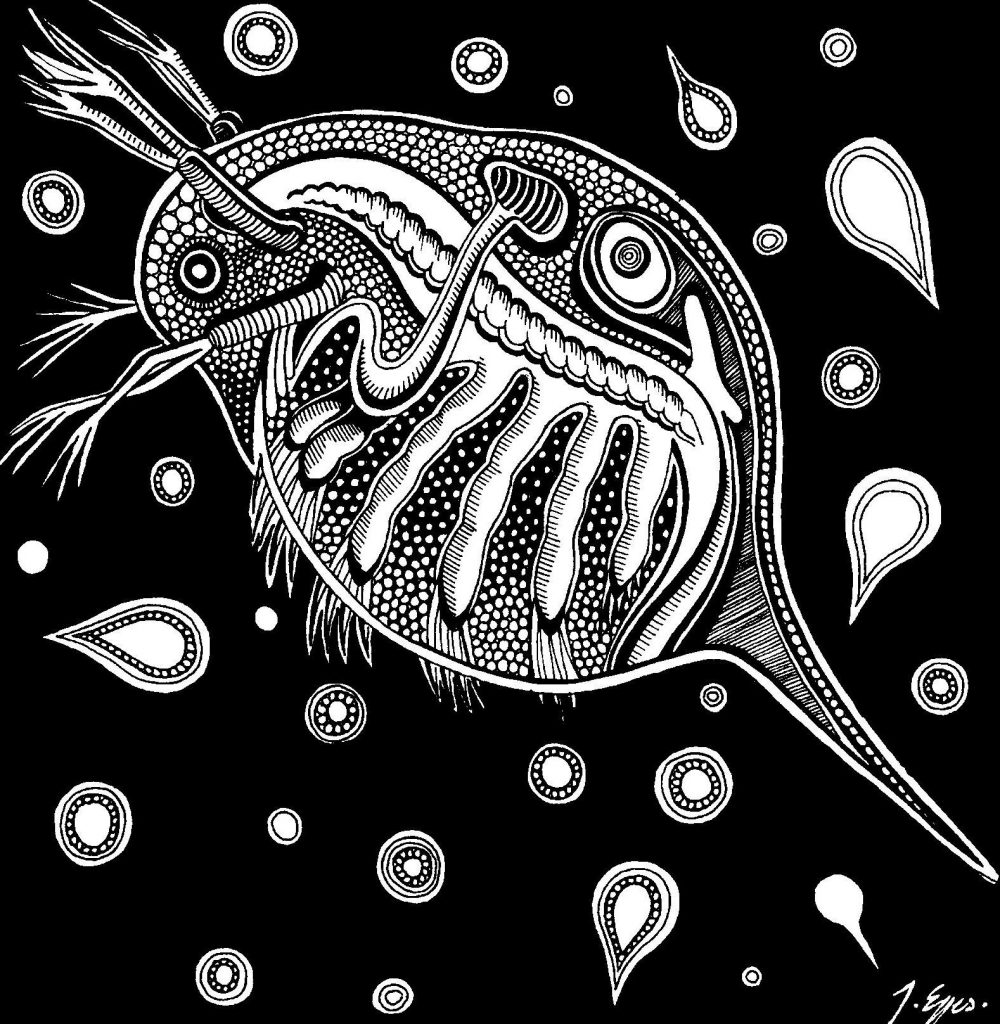
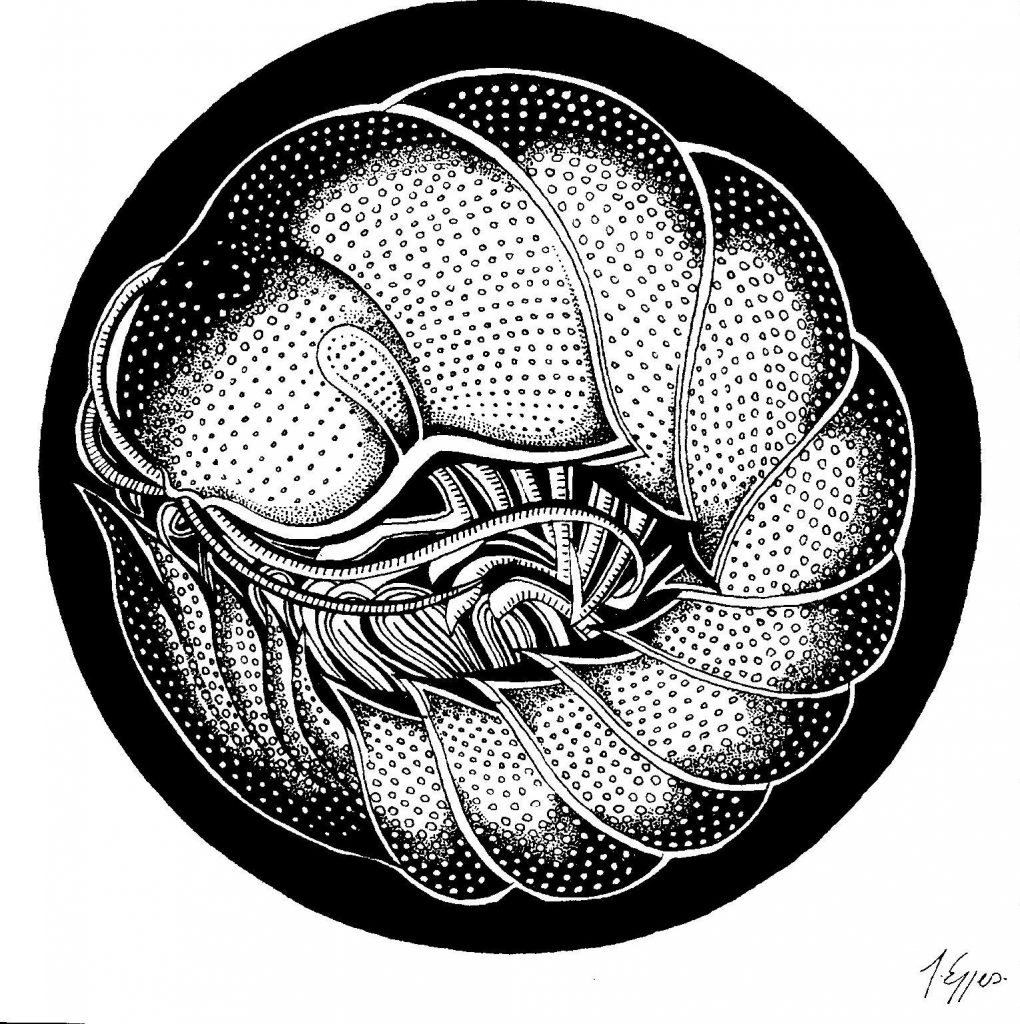
Isopods from the genus Bathynomus are fantastic examples of deep sea gigantism : While isopods are generally small creatures of sizes below and of a few centimeters, members of this genus can reach sizes of up to half a meter. Like other isopods they can curl their body into a neat ball to protect their sensitive underside as a defense mechanism against predators.
The first specimen of giant isopod was only recovered in 1879 and since they live in the deep ocean there is not a lot known about them. Specimen have been found in a depth range of around 170 m to more than 2.5 kilometres deep. Like many other deep-sea creatures they have extremely slow metabolism and are able to go a long time between meals in a state of semi hibernation (one specimen from Japan was observed to not consume any food for over 5 years). When they do eat however, it is generally by means of the scavenging of decaying animals and matters that have floated down from the world above, although there is evidence that the “hunt” slow moving or sessile organisms as well.
Giant Isopods “brood their young in a pouch like extension of their abdomen (the “marsupium”) from which, when ready, the baby isopods emerge not in an abstract larval form as in so many crustaceans but almost fully formed miniature giant isopods, with only their last pair of walking appendages still needing to grow out.
Christmas Island red crab (Gecarcoidea natalis)
This absolute beauty of a crab is endemic to islands off the coast of Australia: Christmas Island and Cocos Island. They are stately animals with carapace sizes of 10 cm and above. One of the thing that they are best known for are their annual mass migrations across their home islands, when their combined mass moves across the island like a red tide. For most of the year they are solitary animals, living in individual burrows across the island’s forests. Like other crabs they breathe through gills and have to be careful to maintain enough moisture around themselves to keep their gas exchange working. This is why they wait for the first rains of summer (generally around November) to start a trek that at it’s peak can involve many millions of crabs. With the first raindrops the males, who typically live further inland, will commence the journey to the sea, being joined by the females as the army progresses towards the shore. Once there, the males will build burrows to attract females to mate with. Once this has been done successfully, the males will migrate back inland while the females remain in the burrows and wait for the eggs (which are incubated in an abdominal pouch) to mature. Release of the eggs into the ocean has to be meticulously timed with the lunar cycle: just before dawn at springtide in the last quarter of the moon masses of females will gently move to the water and release their eggs for the babies to hatch in the salty waves, befor the mothers return to their forest abodes.
One major threat to these crabs that has been estimated to have caused a decrease in the population of at least a quarter of the entire population in recent years is the yellow ant – another powerful arthropod, who is believed to have been imported to these islands accidentally by humans and has been wrecking havoc with the different indigenous species.
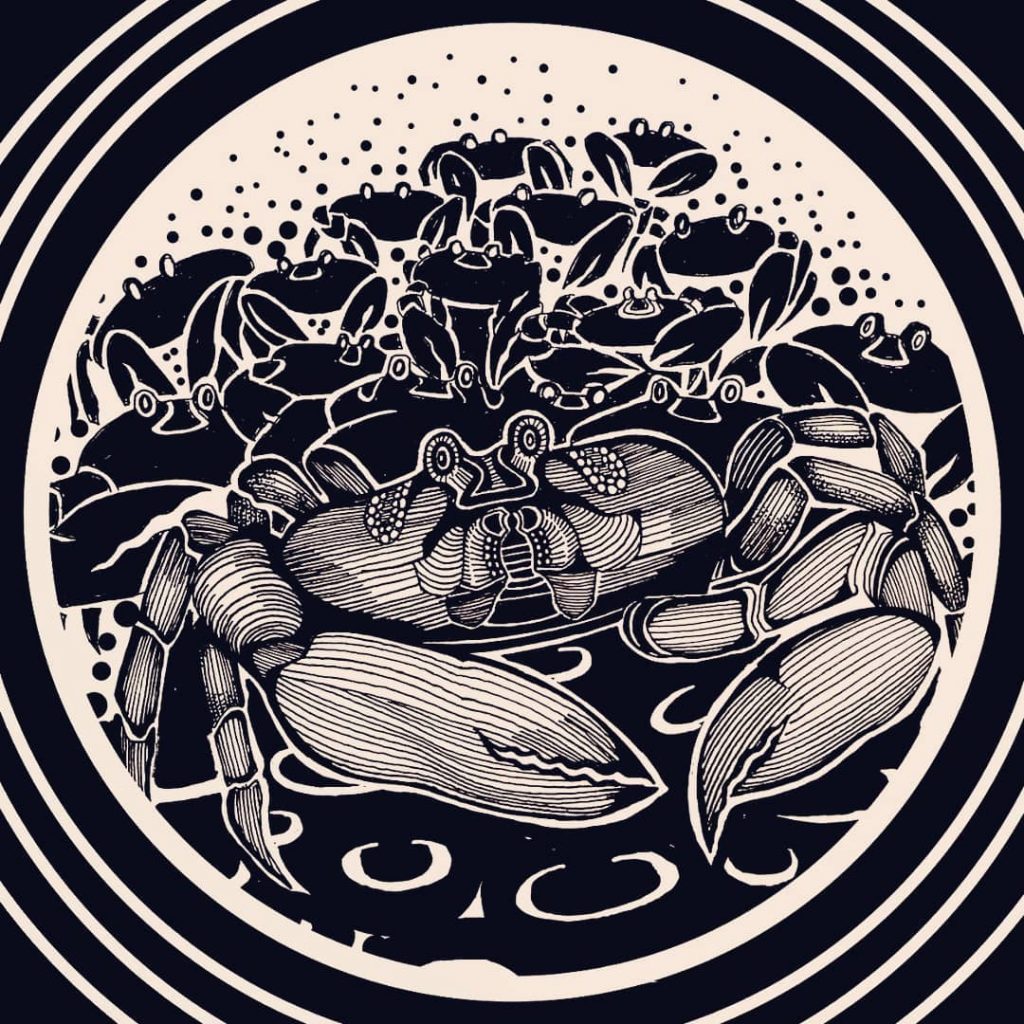
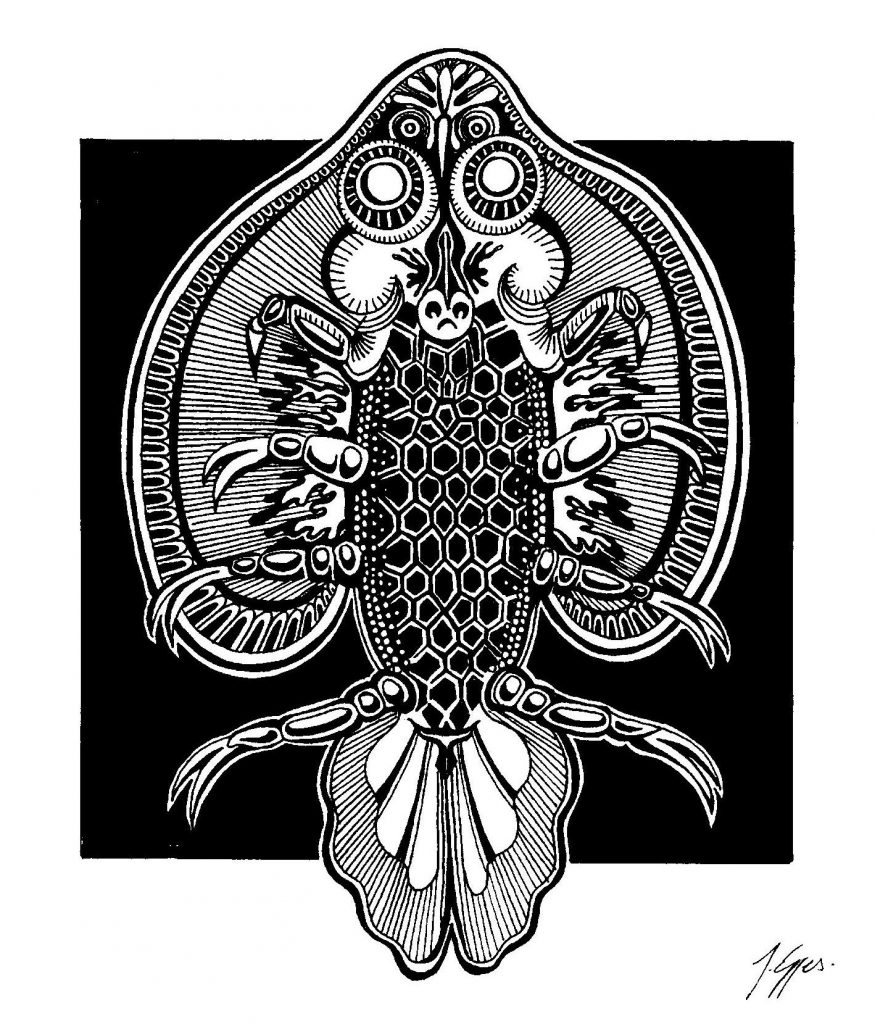
Argulus: Fish lice
Argulus is an incredibly strange looking crustacean belonging to the Branchiura subclass. They are fish parasites that attach themselves to the skin and gills of fish. To do this, they have greatly modified some of their head appendages (the maxilules) to function as large sucker cups.
While some only feed on the skin and mucus of the infected fish, others have special appendages to pierce the skin and feed on the blood, by injecting anticoagulant to keep the juices flowing. While these are rarely detrimental to the fish on their own (although they are certainly unpleasant, itchy and nasty) they can cause great damage and death through degradation of the tissues, gills and fins, as well as through secondary fungal or bacterial infections of the wounds. They have been observed to affect any type of freshwater fish, but are most problematic in species that are farmed, such as trout, salmon or carp, as these are kept close together and the pathogens can therefore spread rapidly and effectively. Further, since Argulus needs a hard substrate upon which to lay its eggs, the structures commonly used in aquaculture present fertile ground for increased success in reproduction.
Coral guard crabs: Trapezia flavopunctata
This indo-pacifician decapod is not only a sight for sore eyes, but is an important member of the coral reef protection guard. Generally they are closely associated with Pocillopra corals, which provide them with shelter and diverse secretions to feed of.
The main enemy to corals from the animal kingdom is the crown-of-thorns-starfish, a huge echinoderm with spikes along its many arms and a ferocious consumer of corals, achieved through the inversion of its stomach and external digestion of the corals tissue. While coral reefs have been heavily affected by climate change, ocean acidification, destruction and pollution, the periodic outbreaks of this starfish have been catastrophic and have caused almost over-night decimation of entire patches of reefs.
A great experiment conducted during a 2008 and 2009 outbreak of these starfish in the reefs near the island of Mo’orea demonstrated the crucial importance of Trapezia crabs in protecting their homes. Corals from whom their crab-protectors were removed by the researchers fell to the attack of the starfish overnight, while those corals with their polka-dotted friends still around showed significantly less damage and had a much higher change of surviving the maurauding starfish. Trapezia flavopunctata has been observed to launch a counter attack against the starfish, pinching the arms, and if that doesn’t deter them, attacking their inverted stomach to stop their digestion of their home. Oh the novels that could be written about these underwater knights in spotted armour.
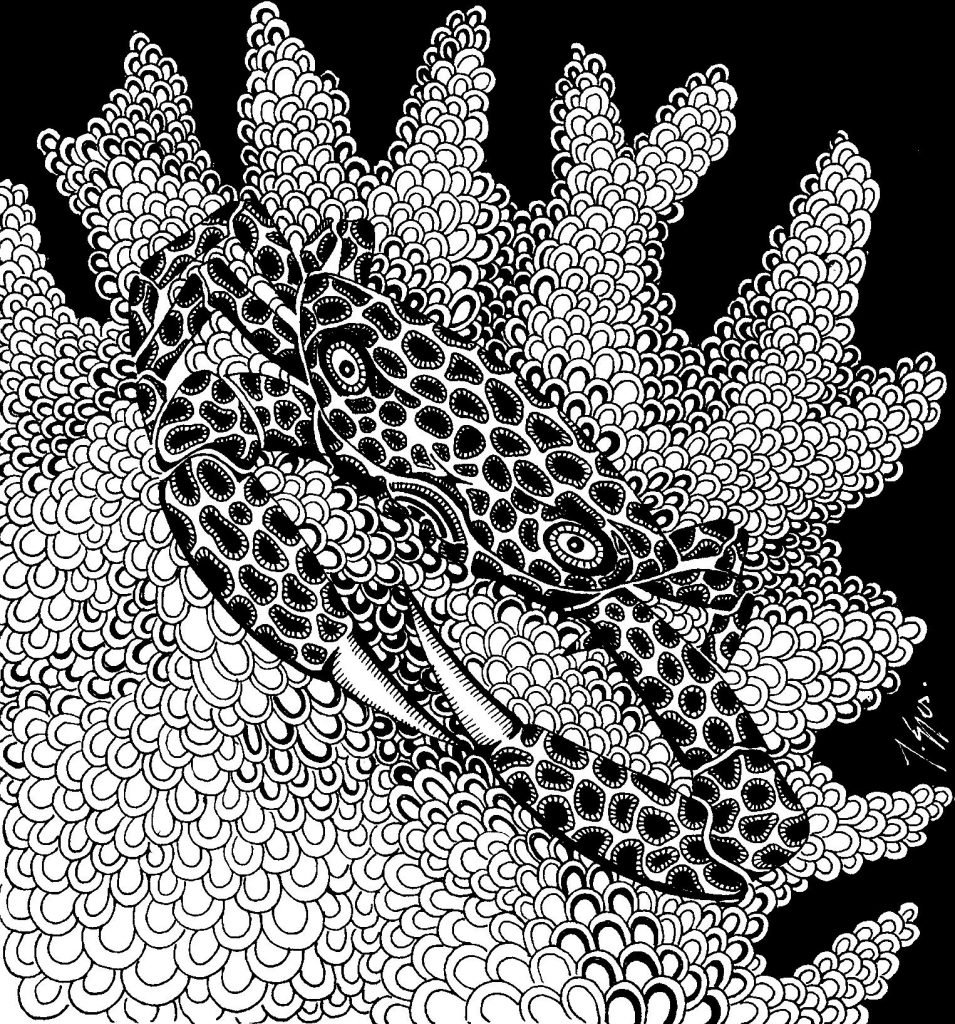
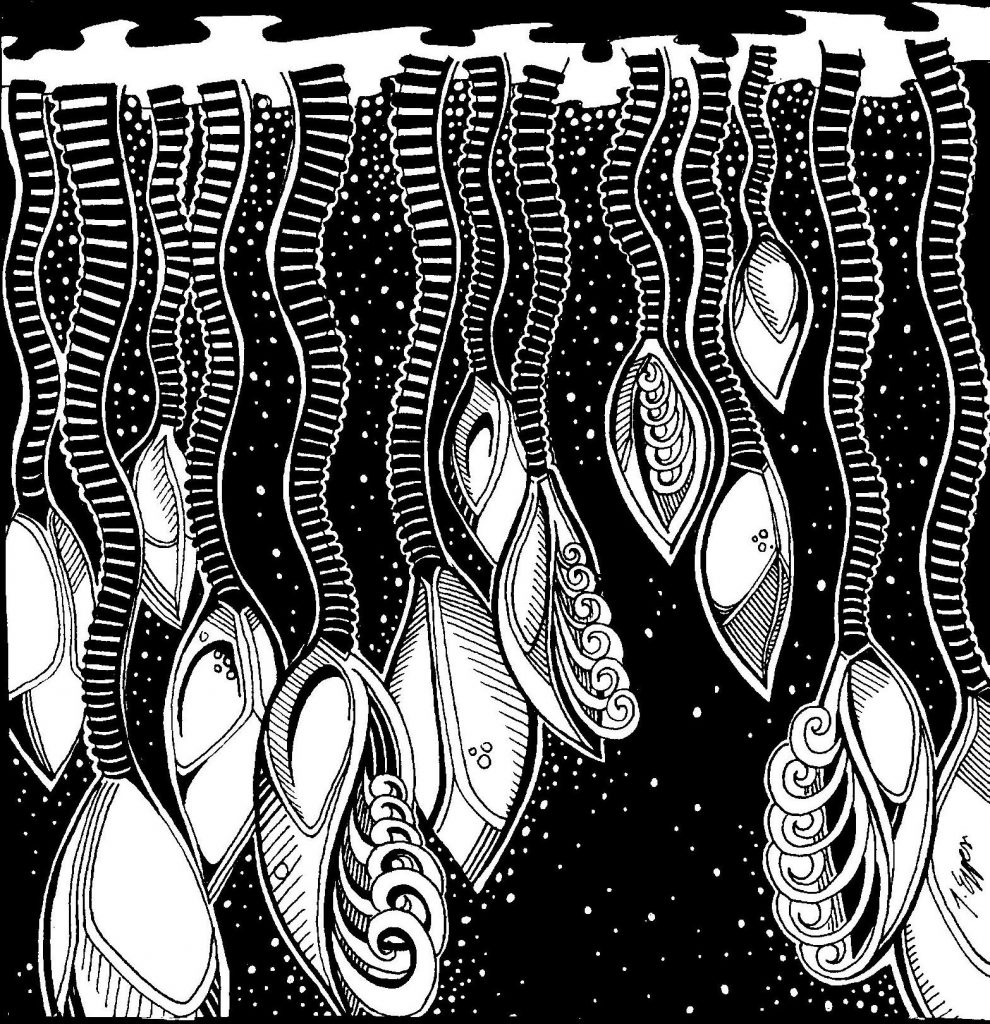
Goose barnacle: Lepas anatifera
The goose barnacle is a pelagic organism with its stalk attaching to any hard flotsam and thus travelling the ocean. Individuals of this species have been found on vessel hulls, pieces of drift wood, turtles, and occasionally even attaches to crocodiles, using a specialised type of cement for their attachment. Their lifestyle allows them to travel the seven seas, and they have thus spread to the far corners of the earth.
Their name refers to an interesting anecdote about 13th century England. At that time, the term “barnacle” was reserved for a particular type of fowl, that bred in the arctic circle and only visited England in its adult form. The mystery surrounding these bird’s origins and their superficial ressemblance to. The barnacles found washed up on the shore, led to some people to believe that there might be a connection there, and that young barnacle geese might spontaneously spring from these strangely formed “eggs”. Although the subsequent discovery of the bird’s migratory lifestyle offered a better explanation of where baby geese come from, the name stuck, and this species in particular retains reference to this mythological origins story in the latin name (anatifera meaning “bringer or carrier of ducklings”).
Goose barnacles are the only barnacles consumed by humans with them being considered a delicacy in parts of the world. They are further unusual among barnacles in that they are simultaneous hermaphrodites, possessing both male and female sexual organs. Although self fertilisation is frowned upon, they will fertilise each other in their little floating colonies and since fertilisation occurs internally, each can brood a number of eggs bneath their mantle before releasing them into the big wide ocean.
Skeleton shrimps:Caprellidae
They are generally found in nearshore waters and often take refuge in benthic plant and animal life, such as sea-fans, coral or algae to which their colour is often adapted in an attempt to become indiscernible from the long sticky-type structure that they attach to.
If amphipods are known as the “insects of the sea” the skeleton shrimp (an amphipod, not an actual shrimp) can be considered the praying mantis of the ocean, due to their visual resemblance and the habit of young mothers to dispose of their lovers quickly after successful fertilization of the eggs. Like some of the other crustaceans of the peracid group, the female broods the eggs in a specialized pouch, from which they emerge as fully formed, yet tiny skeleton shrimplets. In quite an endearing manner, they will continue to sit on their mother for a number of days after hatching, forming what looks like twigs to her branchy body.
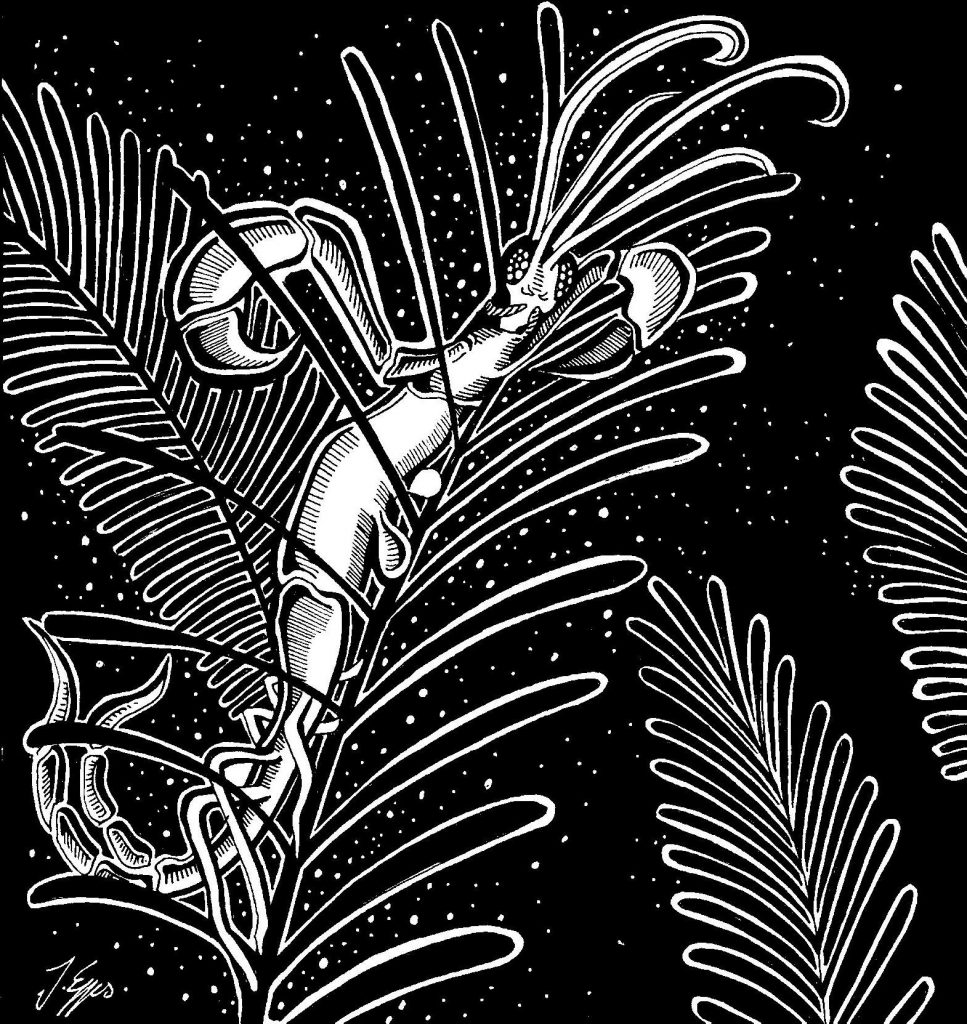

Spiny lobsters
Lobsters are divided into two overarching groups: the clawed lobsters and the spiny lobsters. The spiny lobsters are incredibly beautiful with many species displaying mottled patterns in vivid and fluorescent colours.
They are generally active at night, emerging from rocky crevices to hunt small invertebrates and other fellow crustaceans. In order to deter predators, they employ a rather peculiar and particular mechanisms: by rubbing their antennae against a small plate called the “plectrum” and producing a screeching sound that is highly unpleasant to other organisms and particular to different species of spiny lobster.
Spiny lobsters are quite social and are aware of each other and each ones respective rank in the hierarchy. Mates will fight for access to females and then retreat with their partner of choice to their dens, where mating generally occurs once the female shed her exoskeleton (moulting). The fertilized eggs are attached to the females tail, where they remain until the larvae hatch and go on their long oceanic journey.
The coconut crab
This animal is considered the second largest living arthropod (the phylum that includes crustaceans, insects and scorpions) with up to a metre in leg span recorded, as the first price goes to the Japanese spider crab. The fact that the coconut crab spends most of its adult life on land, means that their impressive size is more readily observed and sometimes feared by humans.
They are closely related to hermit crabs, although they only rely on gastropod shells in their juvenile stage, and grow a sufficiently hard exoskeleton to protect them in their adult stage. It is also in this stage of growing up that they switch irreversibly from a main gill-based breatching to a lung based breathing, meaning that adult crabs will drown if immersed in water for an extended period of time.
While, as their name suggests, one of their main food sources on the tropical islands that they live on are coconuts which their claws are sufficiently powerful to crack open, they feed on a very diverse menu, including fallen fruits, seeds but also cadavers of dead animals swept onto the seashore and unsuspecting animals falling prey to the hunting of these surprisingly quick and agile crabs: rats, seabirds and human children (jokes, jokes). They are very strong and can lift up 30 kgs, thus, while no attack launched on small humans has been recorded, it is not entirely implausible.
Inversely, their large size makes them a desirable prey to humans- many islanders hunt these exceptional invertebrates as their main source of protein, which, over the years, and in combination with habitat loss, has meant that their populations have shrunk significantly.
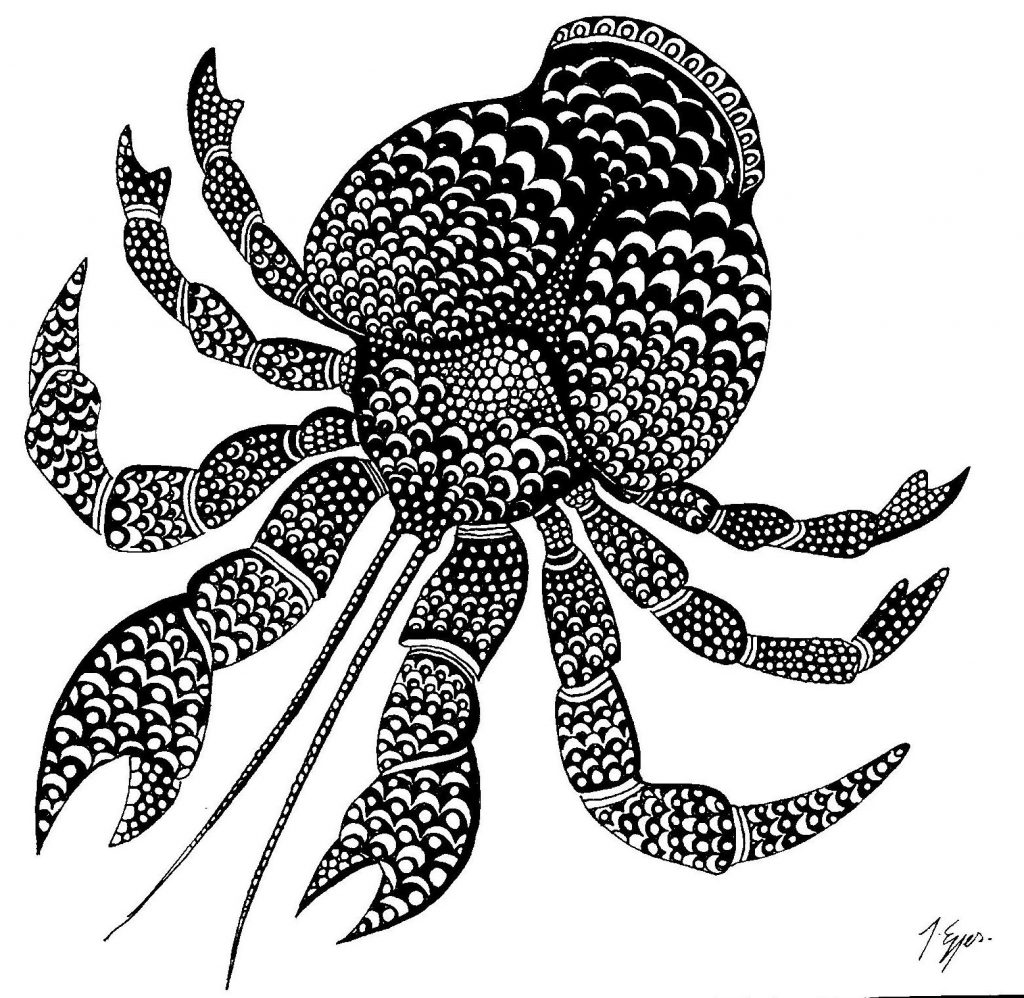
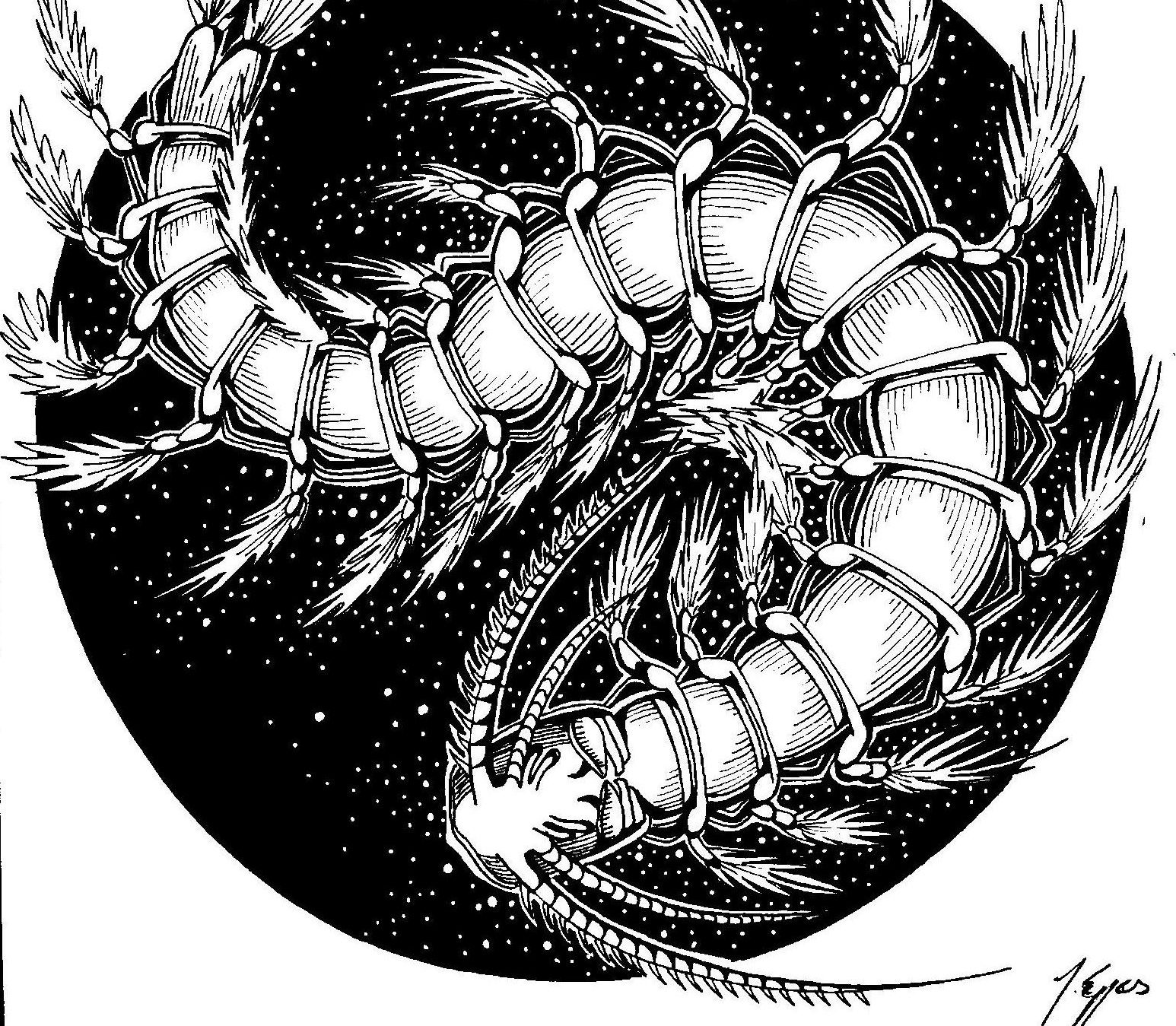
Remipedes
Remipedes are interesting creatures: they inhabit coastal caves along central America , North Australia and around the Indian Ocean. As other cave-dwelling organisms they are functionally classed as “Stygobites”, cave dwellers, who exhibit evolutionary adaptions to the dark and life-impoverished habitat. For Remipedes that means that they have lost their pigmentation and their eyes, using their anttennaes and tactile senses for orientation.
While their body-form is thought to closely reflect the evolutionary early form of crustaceans, they have one feature that is a unique adaption among the group: they are the only crustaceans to exhibit venom in their bite, which, while common among insects and arachnids is completely absent from their crabby relatives.
This is a Zoea, a common form or larvae found in the early life cycle of many decapod crustaceans, such as lobsters and particularly crabs. While it is only one of many forms of development that these crustaceans will generally undergo while they are in their planktonic stage, this to me is by far their most adorable form, with the huge compound eyes and the unicorn-like stalk on their little heads. What technically defines the Zoea stage is that they here exhibit active swimming behaviour with their little maxillipeds, the appendages that will later generally morph into feeding apparatus. When crustacean larvae were first discovered in plankton samples they were thought to belong to a completely own genus, thus the name (given by Louis Augustin Guillaume Bosc in 1802) that follows the classic taxonomic pattern for genus denominations. Due to their prolific presence in the plankton they are a key ingredient on the menu of many plankton feeders.
